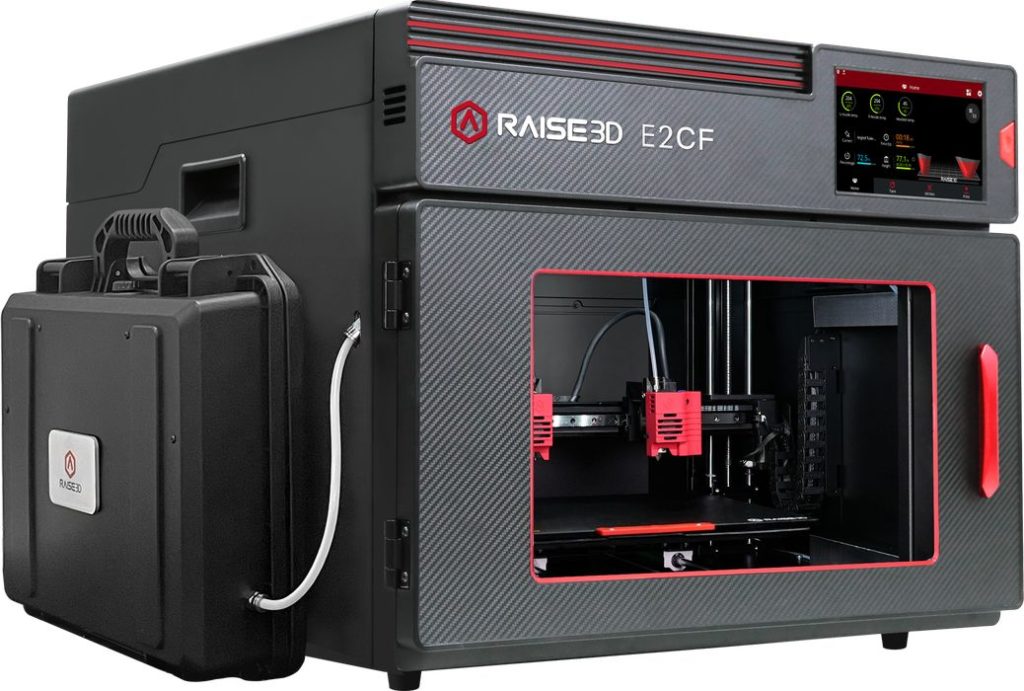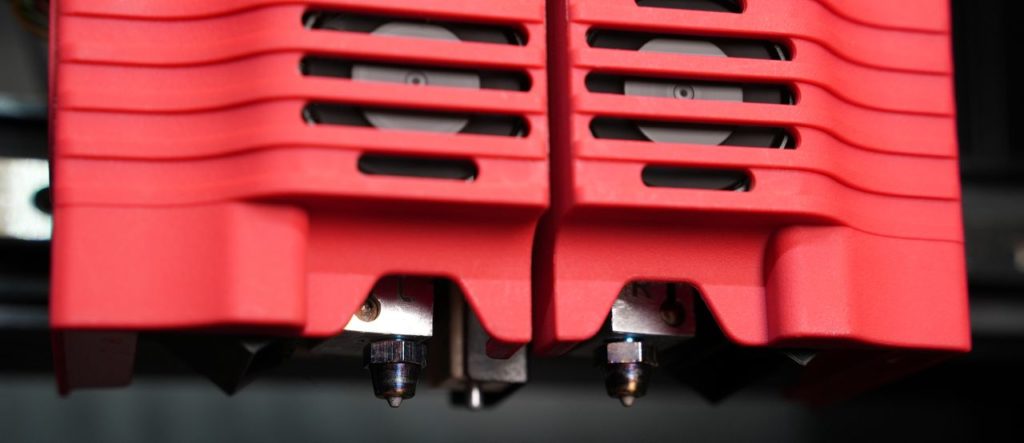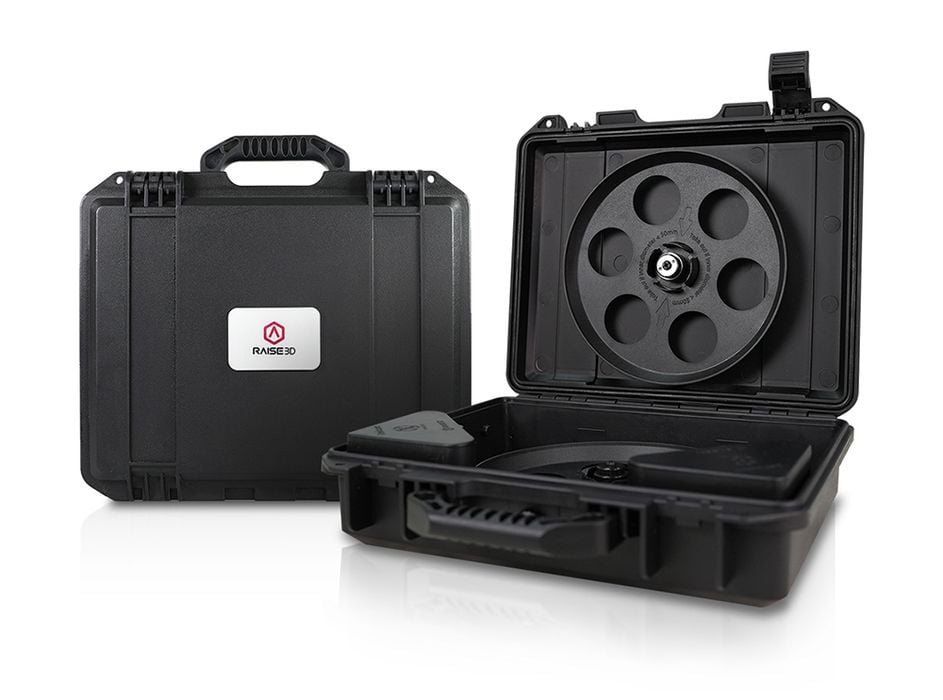
Raise3D announced a new desktop 3D printer designed for use with carbon fiber composite material.
The new E2CF device is based on their previous E2 machine, but includes quite a number of improvements, many of which are focused on carbon fiber aspects.
You might be able to 3D print carbon fiber material on any 3D printer, but you probably won’t succeed for very long. That’s because CF material, which is essentially a polymer mixed with finely chopped carbon fiber segments, can quickly trash a poorly-equipped 3D printer.
Specifically, the carbon fiber segments that pass through the system are highly abrasive. They are literally harder than steel, so in a way the soft thermoplastic flow is like liquid sandpaper for a hot end. Sooner or later, your hot end will eventually have an increased diameter that will affect the quality of prints. For softer brass nozzles, this can happen quite quickly. Thus, it’s critical to optimize a 3D printer for use with CF materials.
What features does the new Raise3D E2CF include to handle CF? Let’s take a look.
Raise3D E2CF Features

The most important feature is an upgraded hot end. The nozzle is made from a stronger material that can better withstand the abrasive CF flow. Raise3D doesn’t say what they’ve made the new nozzle from, but it’s likely to be a hardened steel or perhaps tungsten metal.
Nevertheless, the persistent CF flow will eventually eat any nozzle. Raise3D explains:
“The extruders and nozzles are functionally and mechanically enhanced for long term usage, allowing for over 1000 hours of printing with Raise3D Industrial PA12 CF filament.”
This suggests that the nozzle will still be a consumable, but at least it lasts a very long time.
Raise3D Dry Box

Raise 3D has also included twin standalone dry boxes for use with the E2CF. The dry boxes store filament in an environmentally sealed chamber that keeps out the moisture and maintains filament dryness.
Dry filament is essential because a material corrupted with moisture will generate bubbles in the flow as the material is heated in the hot nozzle. These bubbles will mess up surface quality and more critically, damage the part’s strength by including “air” instead of actual model material.
The need for dry boxes with CF 3D printers is due to the fact that many CF filaments are actually a combination of carbon fiber segments and nylons. Raise3D’s new Industrial PA12 CF is exactly that.
Nylon material has an extremely high rate of moisture absorption, to the point where a filament spool left open for even a single day will effectively ruin the quality. It’s essential to keep the filament in a dry container, and that is what Raise3D is doing here: they are increasing the quality of the output by ensuring the quality of the input material.
There’s a second reason for the two dry boxes: support material. Like most sophisticated desktop 3D printers, the E2CF is an independent dual extruder device that can 3D print two materials in a single job. That’s normally not for two model materials, but instead one of the two is soluble support material.
The soluble support material can be dissolved in water, enabling easy printing of highly complex objects.
But there’s a catch: soluble support is notoriously hygroscopic, meaning it will soak up moisture from the air as fast as nylon. That’s why there are two dry boxes: one for model, one for support.
Coincidentally, Raise3D has also announced a new support material, specifically for this machine: their breakaway support is made from chemicals that don’t directly bond with the CF material, making it possible to pull off support structures without compromising print surface quality.
Raise3D has also improved the E2CF by upgrading the calibration system The E2CF now includes an optical sensor that’s used during bed leveling operations. Raise3D said it will improve the accuracy of Z-gap measurements and thus make the first layer of prints far more reliable.
Aside from the CF features, the E2CF includes a number of useful specifications:
- Build volume of 330 x 240 x 240 mm (single)
- Removable spring steel build plate with BuildTak coating
- Bed temperature up to 110C
- Optical filament-out detector
- Maximum nozzle temperature of 300C
- Full network connections
- Color touch screen
- Quiet operation with only 50dB noise when operating
- HEPA filter with activated charcoal for in-office use
Unfortunately, the E2CF is not quite available. The company intends on shipping the first units in Q4, and will take pre-orders a few weeks prior to the release date.
Via Raise3D
